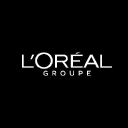This New Trend Followed By The Beauty Leaders Has Its Advantages As Well As Its Pitfalls
The two leaders of the beauty business, L’Oreal (annual revenue of ~$30 billion) and Estee Lauder (annual revenue of ~$11 billion), are currently following a trend of acquiring beauty brands known for their unique specialties and fan followings and building those brands independently to grow their respective companies.
Over the recent past, Estee Lauder bought Becca Cosmetics, famous with its makeup products like shimmers and highlighters among its diverse user base and social media followers, and Too-Faced–one of the fastest growing makeup brands in the specialty-multi and online channels, and a favorite among American millennial beauty users. Estee Lauder paid almost $1.5 billion to acquire Too-Faced. Other than these, Estee Lauder’s acquisitions over the last couple of years include small to mid-sized companies such as: By Kilian, Dr. Jart+, Glamglow, Frederic Malle, Le Labo, and Rodin Olio Lusso. According to rumors, the company may be planning on acquiring Korean skincare brand, Drunken Elephant in the near future.
L’Oreal, on the other hand, spent almost $1.2 billion to buy U.S. based prestige beauty company, I.T. Cosmetics last year and towards the end of 2016, it decided to acquire three active cosmetics brands — CeraVe, AcneFree, and Ambi from Valeant for $1.3 billion. In July 2016, L’Oreal announced the decision to buy luxury perfume brand, Atelier Cologne.
- Which Beauty Stock Is A Better Pick – L’Oréal Or Ulta?
- Down 25% This Year Is Estée Lauder A Better Pick Over L’Oréal?
- Is There More Room For Growth In L’Oreal Stock?
- After Underperforming The Markets, Can L’Oreal Stock Rally?
- L’Oreal Stock Poised For Bounce Back After Rough Month?
- After Dismal Performance Last Month, L’Oreal Stock Looks Set To Rebound
The trend currently is to buy brands that fulfill some of the following criteria:
- Popular among the millennials
- Niche brand appeal
- Help the company in gaining market shares in matured markets such as North America
- Innovative product formulation
- Caters to a diverse beauty user base thus providing the opportunity for global expansion
- Has an impressive digital following or is backed by popular beauty bloggers
This brings forth the disadvantage of the brand’s uniqueness being lost under the umbrella of a gigantic beauty company. One of the things that these big beauty leaders need to keep in mind is that they need to maintain the authenticity of the brands in order to keep growing their user bases. Most of these independent brands are popular because of the uniqueness of their products and brand appeals. Hence, it is extremely crucial to preserve that niche appeal rather than transforming the acquired brand into just one of the many brands under the big beauty company’s umbrella. The customers or fan followings for these brands are mainly attracted by their authenticities and hence it is crucial to retain the brand in its pure form and not mold it into something to suit the beauty giant’s brand image.
Editor’s Note: We care deeply about your inputs, and want to ensure our content is increasingly more useful to you. Please let us know what/why you liked or disliked in this article, and importantly, alternative analyses you want to see. Drop us a line at content@trefis.com
Have more questions about Estee Lauder and L’Oreal? See the links below.
- What Is Estee Lauder’s Revenue And EBITDA Breakdown?
- What Is Estee Lauder’s Fundamental Value On The Basis Of Its Forecasted 2015 Results?
- How Has Estee Lauder’s Revenue And EBITDA Composition Changed Over 2012-2016E?
- What Is Estee Lauder’s Fundamental Value Based On 2016 Estimated Numbers?
- What Drove Estee Lauder’s Revenue And EBITDA Growth Over The Last Five Years?
- Where Can Estee Lauder’s Growth Come From In The Next 5 Years?
- Estee Lauder Q3 FY16 Pre-Earnings Report
- How Did The Top Two Beauty Companies Perform In The Hair Care Segment Over The Last Five Years?
- How Does Estee Lauder’s Financial State Currently Look?
- Who Relies More On Debt: L’Oreal Or Estee Lauder?
- What Are Some Of The Trends Expected To Drive The Future Of The Beauty Market?
- Estee Lauder Braved Numerous Challenges To Deliver Growth Above That Of The Prestige Beauty Market
- What Is L’Oreal’s Fundamental Value On The Basis Of Its Forecasted 2015 Results?
- How Has L’Oreal’s Revenue And EBITDA Composition Changed Over 2012-2016E?
- L’Oreal: Year 2015 In Review
- What Is L’Oreal’s Fundamental Value Based On 2016 Estimated Numbers?
- L’Oreal’s Q1 2016 Earnings Results
- How Did The Top Two Beauty Companies Perform In The Fragrance Segment Over The Last Five Years?
- How Can L’Oreal’s Digital Investments Help The Company?
- Who Relies More On Debt: L’Oreal Or Estee Lauder?
- What Are Some Of The Trends Expected To Drive The Future Of The Beauty Market?
- Why Might L’Oréal Be Acquiring Luxury Perfume Brand Atelier Cologne?
- How Is L’Oreal’s Revenue Composition Expected To Trend?
- How Is L’Oreal’s Skincare Business Expected To Trend?
- Why Does L’Oreal Want To Acquire The Skincare Brand, Société des Thermes de Saint-Gervais-les-Bains?
- Here’s Why L’Oreal’s Digital Progress Places It Way Ahead Of Its Peers
- L’Oreal Posted A Robust Q3 2016 Indicating That The Second Half Of The Year Might Emerge Stronger Than The First Half
- Here’s Why The Global Beauty Leaders Might Be Focusing On Acquiring Makeup Companies
See More at Trefis | View Interactive Institutional Research (Powered by Trefis)
